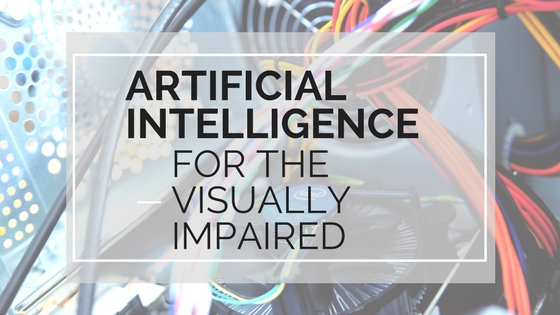The Rise of Artificial Intelligence For the Visually Impaired
Artificial Intelligence Definition
The chances are that you have some knowledge of artificial intelligence. You might have seen it on the news, on a tv show, or maybe you are an artificial intelligence aficionado (in that case, props to you). Before we dive into artificial intelligence and its place in vision aid, let’s define artificial intelligence. According to Merriam-Webster, artificial intelligence is defined as a branch of computer science dealing with the simulation of intelligent behavior in computers. AI mimics intelligent human behavior without having the ability to perfect it, often achieved by trial and error. (Marr, 2018) When the computer system learns the proper way to perform a task, it will continuously build on that newfound knowledge to achieve human-like mannerisms and responses to tasks. Unlike the human brain, it cannot think beyond what the program it was built on will allow. This means that the opportunity to take over and create a mind of its own is not possible. (Orzechowski, 2017)
So, how does AI relate to vision aids? If you are on the spectrum between visually impaired and legally blind, it could mean mobility beyond previous capabilities. Freedoms that have yet to be afforded to the 1.3 million people in the United States who are considered legally blind (according to the NFB) are within reach. The increasing access to artificial-intelligence-based vision-assist devices has the potential to take life to new heights.
Seeing AI is a free app that narrates the world around you. This app is designed for the blind and low vision community as an ongoing research project. It harnesses the power of AI to open up the visual world and describe nearby people, text, and objects. Seeing AI demonstrates how technology can make the world more inclusive.
Devices Using AI Technology
Companies like Microsoft, NavCog, Horus, AIServe, and MyEye are working on software projects combining vision aids and artificial intelligence. One of the more exciting aspects of artificial intelligence use for the visually impaired community is that the more the user wears them, the more helpful these devices will become for everyday life. You learn the device; the device "learns" you. It’s like memory foam, but for vision!
You might be saying, “What do you mean by increased mobility?” The company generating the most buzz for its use of AI software is Microsoft. Microsoft has built a free app that makes it easier to “navigate the world around you” to use their words. This quote may seem like a bold statement for an app on an iPhone/Android device, but the list of features is impressive. With facial recognition software, the ability to transcribe handwritten documents, a feature explaining the surroundings of the user, as well as six additional features, the buzz around this software begins to make sense. (Microsoft, 2018)
While Microsoft is a name people are fast to recognize, they are far from being the only company implementing this intelligence software into their devices. One company using an app instead of a wearable device is Navcog. Navcog, in collaboration with IBM Research, has developed a software that feeds live directions to the user. (Basulto, 2015) They can do this by using Bluetooth technology and your phone’s camera to turn images of your surroundings into a 3D map. This allows the app to give auditory directions to the user through headphones. Navcog has alluded to plans to expand the capabilities of its app to draw in users without a visual impairment.
Horus and MyEye are two companies working with wearable AI technology for the visually-impaired. Horus’ shape is reminiscent of an MP3 player, while MyEye is a finger-sized device that magnetically attaches to glasses. (Gaskell, 2018) Both of these products can recognize faces and text. Horus takes it a couple steps further with the functionality to identify objects and point out obstacles.
There are many other companies developing technology to assist the visually impaired. I encourage you to do additional research into more upcoming products.
Future Developments
Because we only see the beginning of the use of artificial intelligence to aid the visually impaired and because of the rapid pace of innovation, the use of AI will continue to become more and more streamlined with our lives. As technology continues to be adapted and tested, there is hope that life for the visually impaired will see far fewer obstacles. For right now, keep watching new software updates and hardware improvements as we journey ever closer to the possibility of total accessibility.

